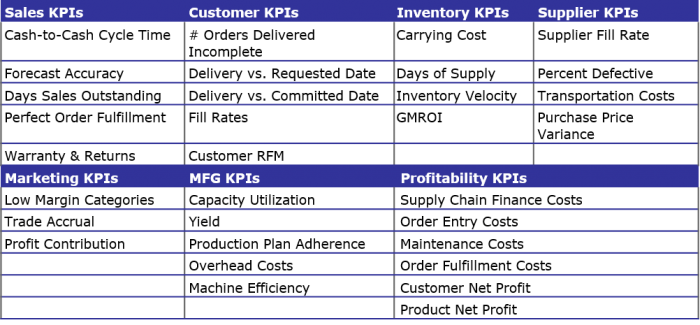Dashboards: Linking key metrics across the enterprise
 How dashboards can help you gain greater visibility into corporate performance
How dashboards can help you gain greater visibility into corporate performance
Never before has there been more data available to senior executives regarding the performance of their enterprises. Pervasive computing and “big data” has made it easy to log and track even the most mundane details in the most obscure department. Yet therein lies another problem. There is so much data that many aren’t sure what to do with it or don’t exactly understand how to pull key metrics from the data in order to bring clarity to their business strategies and more visibility and transparency to their corporate performance.
That’s where executive dashboards come in.
Executive dashboards and scorecards bring clarity to the data by helping management to immediately identify and focus on drivers in key areas such as supply and demand, manufacturing, and time to market.
More and more companies are taking note of this, too. In a recent study of more than 400 IT organizations using Enterprise Performance Management (EPM) solutions, 26% of large companies have implemented dashboards and scorecards over the last several years, with another 13% implementing them currently underway. Mid-size companies are following suit, with 15% currently implementing dashboards and scorecards, and another 34% of mid-sized companies in the process of evaluating them.
Corporate executives today can now leverage scorecards and executive dashboards that incorporate Key Performance Indicators (KPIs), or performance metrics that can be customized to fit the strategic goals of the company from the corporate level all the way down to individual plants.
A Greater Focus on Operational KPIs
Instead of focusing solely on financial data, today’s executive dashboards are relying more and more on operational KPIs. Why. Because while financial KPIs are good for looking at revenue and costs on an accounting cycle (e.g., monthly, quarterly) basis, operational KPIs enable companies to determine in real-time, day-to-day, the underlying problems or opportunities that can be taken to improve business efficiency. Effectively designed dashboards enable executives and managers to better focus resources, improve operational efficiencies, and leverage opportunities for growth by connecting operational metrics to financial goals.
Sample KPIs for Performance Dashboards
It is important to note that for a KPI to be used effectively throughout the enterprise, there has to be agreement on the definition, with acknowledgement of the different needs for different departments while still supporting top-level business goals. For example, a company that’s focusing on revenue growth and profitability may want to employ metrics that cascade down to the operational level with illustrative dashboards that highlight weekly customer shipments, perfect order fill rates, backlog metrics, and accounts receivable (DSO).
These KPI-supported dashboards should be pervasive across devices and should offer graphical capabilities to make what’s important obvious; enable users to drill down or through the data to investigate the issues; provide proactive alerting and color coding to support managing by exception; and offer links to existing reports, spreadsheets, and other supporting documentation.
At the regional level, the KPIs may focus more on how they tie in with the overall plan, and not so much on the customer or product level. That means a regional executive who is responsible for five plants may want to look at the key elements of what makes each plant operate efficiently. That dashboard could be designed to look at on-time fill rates or what the plant’s capacity is compared to backlog.
For the executive at the corporate level, the KPIs on the dashboard could then leverage that regional data to incorporate it into performance metrics that ties everything together from a revenue and expense standpoint.
In the end, the challenge really isn’t too much data. It’s managing and knowing how to prioritize and apply key metrics to the data you have in order to tie operational execution with business strategy.
